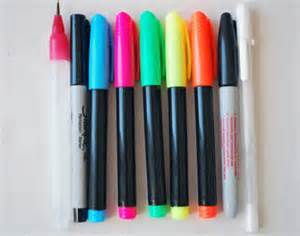This article is the third in a series designed to help you stage more effective readings. Thank you to author Clare Toohey for sharing her wisdom, originally posted on Women of Mystery.
PREPARING COPY
 I love e-books, and if you have a lot of capacity in your reading app for markup, a digital copy may be fine, but for public readings, I prefer having a printout, double-spaced, since that gives plenty of room for me to scribble. I also collate and staple my one-sided pages at the left corner. Once I’m reading, I don’t want to be shuffling pages, flipping back and forth reading duplex, dropping any sheets, or suddenly panicking that I’ve disordered something. Any of these fumbling misfortunes is only abetted by performance anxiety. Once I have my printout ready, I read it aloud with a timer and start marking it up with a pen and highlighter. (Some people prefer pencil, in case they need corrections.)
I love e-books, and if you have a lot of capacity in your reading app for markup, a digital copy may be fine, but for public readings, I prefer having a printout, double-spaced, since that gives plenty of room for me to scribble. I also collate and staple my one-sided pages at the left corner. Once I’m reading, I don’t want to be shuffling pages, flipping back and forth reading duplex, dropping any sheets, or suddenly panicking that I’ve disordered something. Any of these fumbling misfortunes is only abetted by performance anxiety. Once I have my printout ready, I read it aloud with a timer and start marking it up with a pen and highlighter. (Some people prefer pencil, in case they need corrections.)
My markup includes highlighting any word that I wouldn’t naturally emphasize, but which ought to be in this selection. For example, I’d naturally tend to emphasize a word in italics, but what about that weird name of a Rottweiler when it’s called across the park? I’ll highlight things like that, even underline them for max effect. When you highlight this way, your eyes will catch it as you’re working down the page and you’ll be ready for whatever kind of vocal expression is called for when that bit comes.
I also scribble pronunciations next to any difficult words. Pronunciations are especially good to have in the margins if I’m reading work that’s not my own. Perhaps there are foreign words I had to look up, or words I’ve only seen written before and just learned to say (or say differently). Is the philosopher Pliny pronounced more like PLINNY or PLEINY? I don’t want to decide wrong on the fly, or worse, freeze up in confusion when I get there. Not sure what’s going to be difficult? Read it aloud. Again. (This is the cure for almost any problem.) Any place that trips you as you read, no matter how dumb it seems that you stumble there, is a place for you to give yourself some guidance. The Future You will send her fervent appreciation from the podium.
I had a sentence in my recent story that I just couldn’t say without mangling. Yes, I wrote it, but there was something about the way the consonants fell. I kept screwing it up in my classically dyslexic fashion. In this case, I had the ability to edit those words into something I could actually say, preciousness of my own prose be damned. If I can’t change the words, I can at least put in a note to Slow Down just before that part. (This, too, is practically a miracle cure for difficult sections.)
Long, complex sentences with big words (hello, Henry James) may have several emphasis points within their phrases, and in that case, I like to use a highlighter on any word I want to be sure to hit plus slashes to separate the text into logical phrases, and even double slashes or brackets where I want longer than usual pauses. This is my personal, bastardized way of marking up copy, something I learned and then forgot the proper way to do for radio copy in the distant past. If slashes don’t tell you to pause, put something else in. Red dots, tall X’s, unhappy faces. It’s your personal lexicon and the more effortlessly understandable it is to you, the more instantly and helpfully it will speak to you when you’re in the limelight.
—Clare Toohey
Click here to read part 2 of this essay.
Click here to read the fourth and final part of this essay.
Clare Toohey is a genre hack and friendly contrarian who wrangles CriminalElement.com and also blogs for WomenofMystery.net. A literary omnivore who wants a taste off your plate, she adores the uncanny as well as New England sports.
